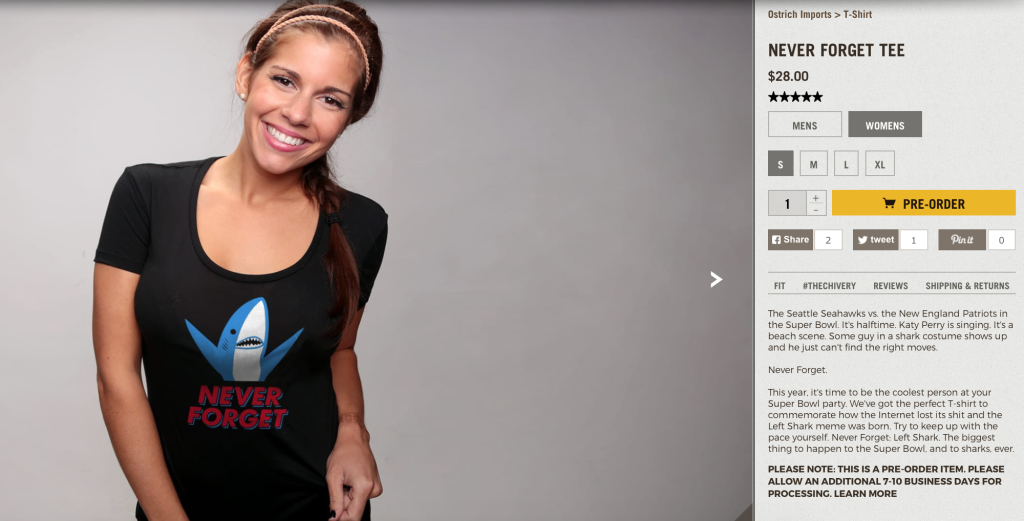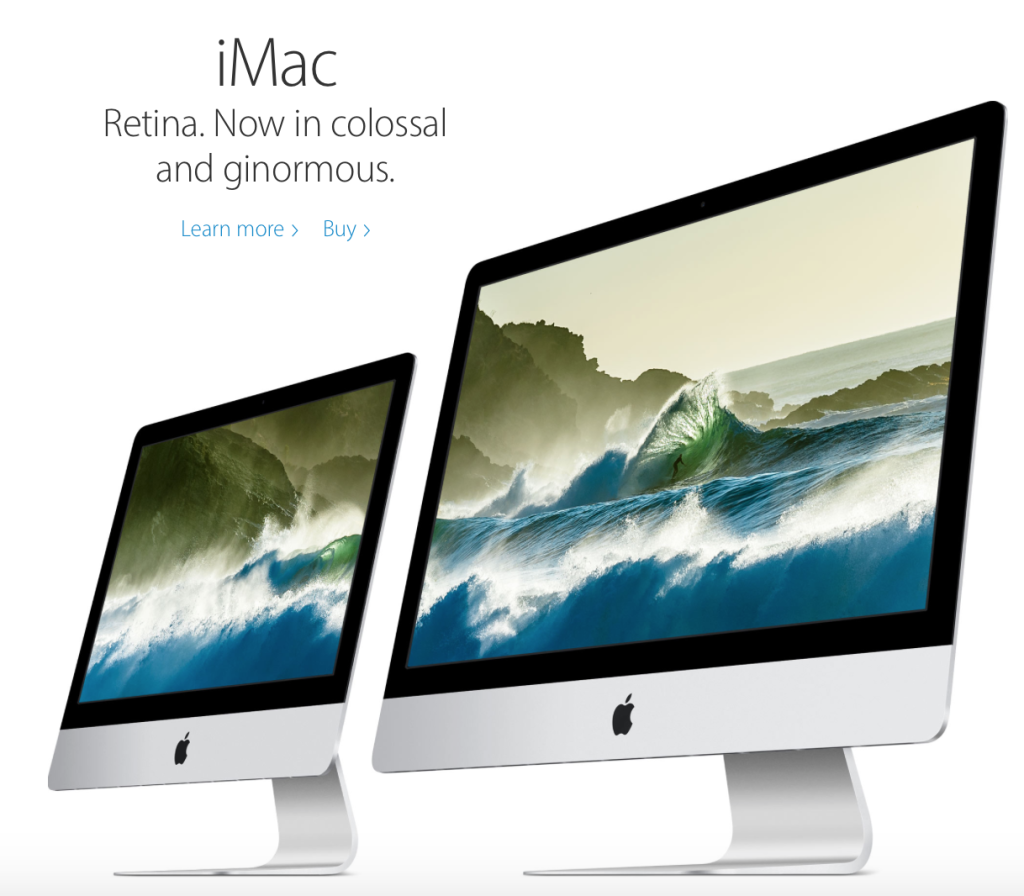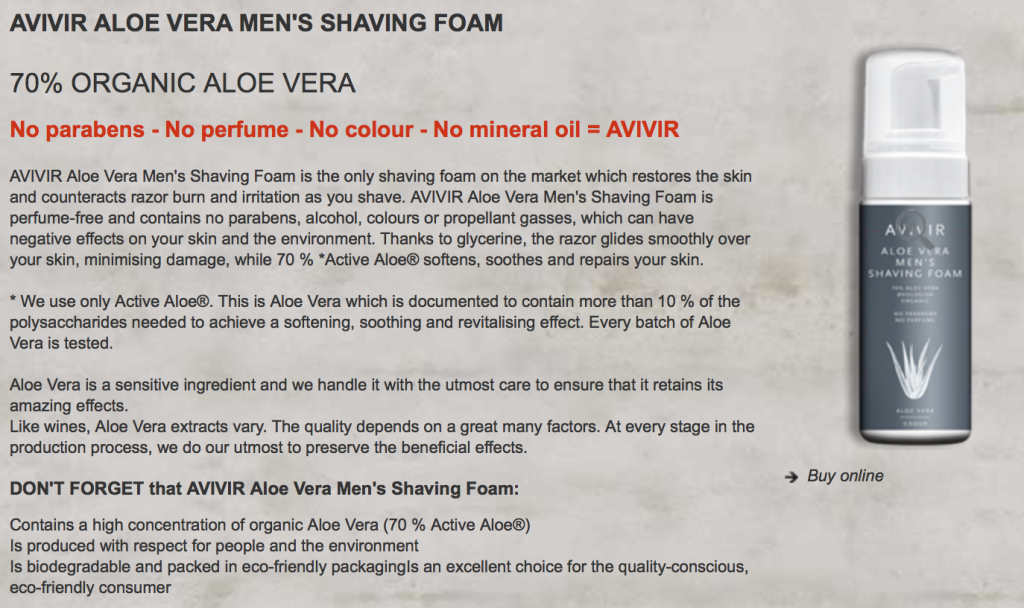Online shopping’s pretty awesome, right?
No need to traipse around a store, carry heavy bags or navigate the multitude of other shoppers desperate for a deal. It is simple, easy and straightforward.
But there’s a problem.
It seems to me there are too many copywriters out there who depend on the convenience of online shopping to do their job for them. Rather than properly optimizing their product descriptions they take the easy way out and simply list a few features. These descriptions are, for lack of a better description, interminably dull.
“But wait,” you say, “that’s what a product description is, it describes the features of the product.” Yes, you are right. A product description should describe the product. But that is not all they are trying to achieve. The real purpose of your product description is to sell.
I mean, could you imagine walking into a store where the salespeople simply told you about the product?
“Hi, can you tell me a little about this bag, please?”
“Sure. It is leather and canvas, measures 35, 21, 10 cm and is water-resistant.”
The pertinent information’s there, but it’s incredibly boring. It does not compel you to purchase the bag or motivate you in any manner at all.
Compare this with the kind of service you get at a luxury bag store (you know, the kind where the staff gets paid on commission).
These guys don’t just mention the bag’s features. They charm you, build a relationship, further establish the brand’s image and add a compelling benefit to each feature. The staff doesn’t just explain the bag; they get you excited about purchasing it.
These sales assistants know how to sell, and they know that only telling you what the bag is won’t compel you to buy.
Is product Copy Really that Important?
I know what you’re thinking.
Product copy is often only a handful of words. You would rather leave your persuasion to awesome product images or compelling videos. The copy, well, that is just a distraction, really, nothing more than the filling in of blanks or technical specs.
Despite the prevalence of advice extolling the benefits of images and video, product copy still plays an integral part in your eCommerce conversion rate.
In fact, the Nielsen Norman Group discovered that 20% of failed product purchase can be attributed to “incomplete or unclear product information.” The study then moves on to explain that such poor product copy has two primary consequences:
- Users experience difficulty in deciding if the product is suitable for them and so abandons the purchase
- Or they make assumptions about the product, purchase it only to discover that it falls short of their assumptions and is, in fact, useless to them.
Both of these outcomes damage not only your overall conversions rate but also your relationship with your customers and thus the opportunities for repeat business.
On top of all this, there are the SEO implications. Any marketer worth their salt knows emotions play a huge role in B2C purchase decisions.
Consumers are always looking for a solution to a problem. What do you think they’re going to type into Google, and which result is more likely to get their click?
A – “35cm length bag”
B – “Stylish bag for carry-on luggage”
It is definitely B.
Using copy that speaks to the needs of your prospects in the language they use is the best way to play this game. It appeases the unforgiving SERP gods, presents the solution your prospects are searching for which ultimately results in a higher CTR and conversion rate.
So, enough with the importance of product copy, let’s take a look at how you can improve yours.
The Best eCommerce Descriptions Immediately Create an Impression
At the risk of retreading a well-traveled path, the most important element in any copy is the headline.
Modern attention spans are short, and consumers will quickly click away from anything they do not find interesting or useful.
When it comes to product copy, you’re rarely utilizing a headline, but you still need to make an impression and hook attention quickly. Here’s what you can do.
1- Understand who you’re marketing to and utilize their tone of voice
Just having a buyer persona in place isn’t enough. You need to know it inside out and back to front. When you know your buyer personas well, you can write copy that appeals to that particular market. When people see something they can associate with, it commands their attention.
Take this example from thechivery.com as an example.
The copy is fun, irreverent and interesting. Great copy for the audience of the Chive (who specialize in fun, irreverent images, and lifestyle advice) that would likely fall flat if trying to market a new B2B solution.
2 – Once you’ve zeroed in on your audience, grab attention with one big idea
When you know who you’re speaking to and how you should address them, it’s time to command their attention. Find the product’s biggest selling point and use it to draw them in.
Apple is the master at knowing what its prospects want and how to highlight it to them.
Granted, the above is one of the few examples with a headline, but it accurately represents how to use one selling point to hook attention and bring prospects into your funnel.
You need your first sentence (or headline) to make an impact. The NN Group study discovered that even a single line of text that doesn’t help the user understand the product is enough to deter or distract.
Understand who your audience are, and create an incredible opening line or headline that not only speaks their language but explains how the product meets their needs.
Features and Benefits
So you’ve hooked attention with a killer headline or opening sentence. Awesome. What now?
Lots of product descriptions start strong, only to later come apart. They hook attention before devolving into the usual, boring features only explanation.
The common copywriting rule is to focus on benefits over features, after all, features tell but benefits sell. But when it comes to product descriptions people kind of want to be told about the product’s features.
Users want to know the dimensions of the bag, the technical specs of the new iPhone or the region and method in which their coffee was sourced. They add credibility to your benefits claims.
Take Avivir’s shaving foam as an example.
Let’s break down a single feature and benefit listed in the product description above, and interpret how a shopper might view them individually.
Feature – 70% Organic Aloe Vera
Shopper – “70%. That is a lot, but what difference does it make?”
Benefit – Restores skin and counteracts razor burn and irritation
Shopper – “Sounds useful. But Gillette claims the same, and they are $3 cheaper.”
But put these two together and you are laughing.
The shopper no longer has any reasons to doubt. “Why is Avivir $3 more than the nearest competitor that does the same job? Wait, it’s 70% aloe?! Gillette’s only 10%. Wow, I’m getting so much more value for this extra $3.”
When it comes to product descriptions both features and benefits are needed. Benefits alone can sometimes seem hyperbolic and over the top. Add features to your claims to add a little credibility.
Brevity is the Soul of Wit
Product descriptions are by nature short. They’re not 30-page long form letters or marketing brochures. You have limited space to fully explain your product and assuage doubts and fears.
You need to get to the point, not only to avoid wasting the customer’s time, but also to fit everything you need into your very small space of digital real estate.
Use short words, sentences, and paragraphs and don’t be afraid of breaking the established rules of good writing:
- Start sentences with but or and
- Play around with single word sentences
- Cut jargon and use only the simplest of terms
- Be brutal in cutting any and every word that doesn’t add any value
This short, concise form of writing is perfect for the modern reader who prefers to skim read. I’m going to return to Apple’s copy for the new iMac for a quick demonstration here.
In less than 100 words, Apple has managed to expound the benefits and features of their new Retina display. How? By using ridiculously short sentences and to the point, simple language.
I mean, the first three lines of text constitute four sentences, three of which are single words.
Accuracy. Brightness. Clarity. Regardless of how you measure the quality of a display, Retina is in a class by itself.
It is beautifully short and does exactly what it needs to without wasting any of your time.
Preemptively Assuage Buyer’s Remorse
There’s nothing worse for a customer than buyer’s remorse. It’s something that often comes after the sale. However, early onset buyers remorse can dissuade a customer from pressing the purchase button.
We’ve all been there. Staring at our screen asking ourselves if we really need to spend this money. Will we get the use we hope from the product, or could we instead buy something of greater value that we have a greater need for?
Good product copy doesn’t just aim to sell a product; it also needs to assuage these early feelings of remorse and guilt. Here are a few tips on how to achieve just that.
- Use scarcity and urgency elements to highlight a limited time deal
- Highlight the exclusivity or quality of the product (read the above fourth sentence from the Retina description)
- Explain the versatility of the product
- Position the product as an essential item
- Prominently feature money off deals to establish this as a real (short term) bargain
It’s surprising the number of excuses we’ll give ourselves to talk our way out of a purchase. You’ll never be able to answer them all, but with some properly placed urgency and reinforcing elements you should be able to greatly reduce the prospect’s trepidation.
Never Duplicate Copy!
I’m finishing up with something pretty straightforward and obvious here. “Don’t copy” is pretty standard advice, but it works two ways with product descriptions.
First and foremost, never copy descriptions from your nearest competitors. No one likes a plagiarist and copying verbatim from another site can land you in some pretty hot water.
Your customers aren’t fools either, and they will notice the plagiarism. The internet’s made it incredibly easy compare and contrast products across various sites. Do you think they won’t notice if your copy is exactly the same as your nearest competitors? Give them a little credit.
You also shouldn’t copy your own descriptions for similar products. For one, it ensures the accuracy and usefulness of each description are significantly lower than it needs to be. Two, it skews your SEO and keyword rankings and could potentially lead to penalties from Google for duplicate copy.
Plagiarism should never be an option. You can, of course, use your competitors copy as inspiration but be sure that your copy is never identical to theirs. I’d recommend first writing down a very rough draft of what you’d like to say before checking out the competition and using their examples to optimize your copy and layout.
Go Forth and Sell!
Product copy is not as tough as you might think. It is easier to beat the majority of product copy out there that simply lists features while relying on images to do the work for them.
All you need to remember are these five basic steps, and your product copy will be better than at least 60% of the eCommerce stores out there.
- Make a quick impression by making a bold claim your audience will love
- Features and benefits go hand in hand
- Get to the point
- Remove any doubt of a bad purchase
- Make it original
What’s your take on product descriptions? Got any tips that are proven to help increase conversions, or are you a member of the “features-only” club?










